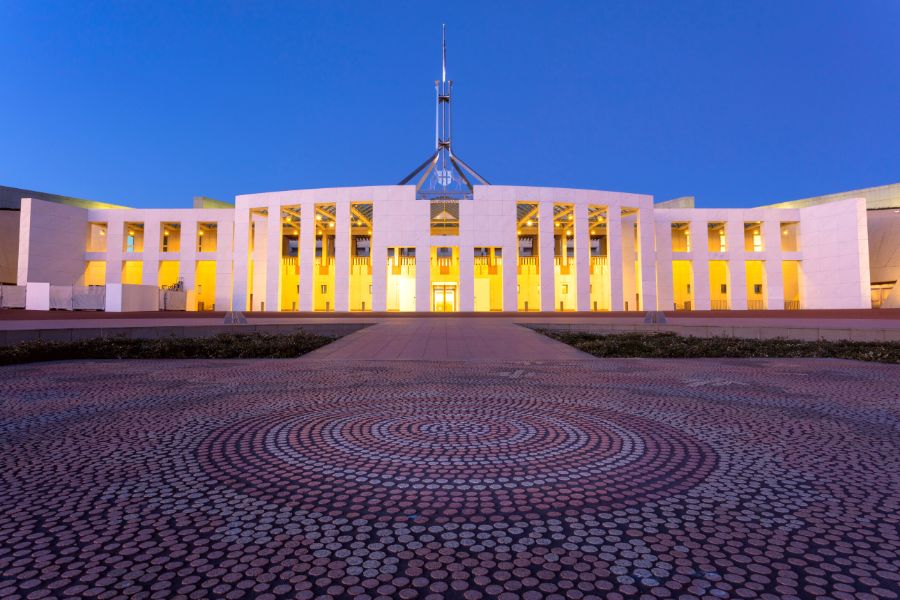
Australia has been fortunate to experience the first budget surplus in 15 years, largely attributed to higher tax revenue from record export earnings and more people being employed. However, the question remains as to how long this economic prosperity will last.
Rising interest rates and sluggish domestic economy
Unfortunately, it is expected that the domestic economy will struggle due to the impact of rising interest rates. As a result, the gross domestic product is predicted to drop to a mere 1.5 percent in 2023-2024 and only slightly recover to 2.25 percent the following year. This low growth projection is in contrast to the current rate of 3.25 percent. Additionally, despite an anticipated increase in immigration numbers to 300,000, inflation is expected to remain close to 6 percent for the 2022-2023 period.
Potential stagflation threatens Australian budget surplus and GDP growth
The Australian budget surplus achieved thanks to record export earnings and higher job numbers may be short-lived as inflation is forecast to remain near 6 percent for 2022-2023. This could lead to stagflation, dampening economic growth despite an expected surge in immigration numbers to 300,000. As a result, the GDP growth forecast is low, projected to fall to 1.5 percent in 2023-2024 and slightly recovering to 2.25 percent the following year from the current 3.25 percent.
Inflation, unemployment, and Reserve Bank’s guidelines
The Reserve Bank’s inflation guidelines may not be met for some time, creating uncertainty and adding to the expectation that stagflation will hinder economic growth. Furthermore, unemployment is also predicted to rise to 4.5 percent from the current record low of 3.5 percent, which will remain the case in the foreseeable future.
Supporting low-income households
Despite this, the budget focuses on Labor values and is expected to provide a range of benefits to support low-income households, including a $40 increase to Job Seeker payments, greater rent assistance and energy subsidies, lower medicine costs, and cheaper doctor visits. Additionally, there will be wage increases for those working in aged care and more childcare subsidies to alleviate the recent increase in cost-of-living pressures. The government is also extending the eligibility age for the Single Parent welfare payment benefit, benefiting around 60,000 single parents from September 1.
Government’s spending strategy and inflation
The Government has defended its moderate spending increases as being targeted and limited, with the aim of reducing inflation. However, whether the Reserve Bank will agree that the increase in overall government spending will help lower prices remains to be seen.
Housing crisis and struggling businesses
To address the housing crisis, the Budget aims to encourage investment in rental housing by halving the annual profit rate on build-to-rent projects from 30 to 15 per cent. Unfortunately, the Budget provides little assistance to struggling businesses.
Green energy initiatives
However, the Budget does include a substantial $4 billion to promote new green energy initiatives, such as $2 billion to support large-scale hydrogen production and $1.3 billion to help households upgrade their homes through the Household Energy Upgrades Fund.
NDIS
Despite this, some of the major budget items appear to be expanding further. While the government has made a bold prediction of containing spending within the NDIS, there is no specific plan to achieve this, except by reducing wastage.
Defence
The cost of providing healthcare services has risen substantially, while defence spending is set to increase to $20 billion over the next four years, including $9 billion for the new AUKUS nuclear-powered submarines.
Generating government revenue
There have been limited efforts to generate government revenue aside from imposing fairer taxes on windfall profits in the gas industry and raising taxes for super accounts worth over $3 million. However, no measures have been taken to address the budget’s structural challenges.
Job Seeker
In addition, there is growing dissatisfaction that the Job Seeker allowance is not being raised sufficiently to lift recipients out of poverty, especially given the soaring cost of living that is affecting Australia’s most vulnerable citizens. This is all happening at a time when the budget is in surplus.
The information contained on this website has been provided as general advice only. The contents have been prepared without taking account of your personal objectives, financial situation or needs. You should, before you make any decision regarding any information, strategies or products mentioned on this website, consult your own financial adviser to consider whether that is appropriate having regard to your own objectives, financial situation and needs.